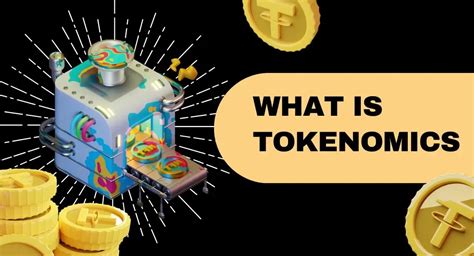Tokenomics, PoS, Non-Fungible Asset
“Tokenized opportunities: crypto exploration, tokenomic, proof of stakes and NFTs”
The world of cryptocurrencies has been in a meteoric growth in recent years, the total value of all combined cryptocurrencies reaching over over 2 dollars only in 2021. In its center, cryptocurrency is built on a decentralized network (nodes) that validate transactions and transactions and creates new currency units through a process known as work proof (POW). However, to unlock the whole potential of this emerging technology, developers resort to tokenomics – the study of the economy behind digital currencies. In this article, we will deepen in the world of tokenomics, explore the concept of proof of stake (POS) and examine how non -functionable assets (NFT) can revolutionize how we think about property and value.
tokenomics: Economic study of digital coins
Tokenomics is an interdisciplinary domain that combines economy, computer science and mathematics to understand the behavior of digital currencies. It is a complex system that involves the creation, distribution and use of chips in a decentralized network. Tokenomics is essential for developers that build applications based on blockchain, as it allows them to design and implement safe, efficient and scalable systems.
One of the key aspects of tokenomics is the concept of supply and demand. In the traditional Fiat currency markets, the money offer is fixed and determined by the central banks. However, in a decentralized network such as Ethereum, the chips are created by a process called “mint”, which allows developers to control the distribution of chips. Tokenomics takes over this concept by introducing concepts such as deficit, the savings based on shortage and managing the shortage based assets.
Proof of stake (POS): Energy effective alternative
In the POW, the miners compete to validate transactions on a network by solving complex mathematical problems using strong computers. Instead, POS uses a more energy efficient approach. Instead of asking for strong computers to solve these problems, the network nodes can vote each other, ensuring the network and validating the transactions without needing massive calculation resources.
This makes POS an attractive alternative to the traditional mining-based power, which requires a significant amount of energy to operate. In addition, POS is often considered more environmentally friendly than POW, because it uses significantly less electricity for power nodes.
Infungible Active (NFT): The new standard for digital property
Infungible assets are unique digital articles that represent property and origin. They are stored on blockchain networks such as Ethereum and can be bought, sold and traded as traditional assets. NFTs have revolutionized how we think of property and value in the digital world.
One of the most significant benefits of NFTs is their deficit and uniqueness. Unlike traditional or cryptocurrency digital files, which can be duplicated or replicated, NFTs are unique. This makes them extremely valuable and coveted by collectors and enthusiasts.
Another key aspect of the NFTs is their transparency and immutability. Blockchain technology allows the permanent registration of the property, which makes it possible to demonstrate that a particular article was held by who at what time.
Conclusion

The world of cryptocurrency, tokenomics, POS and NFTS evolve quickly, as developers continue to explore new ways to use blockchain technology. By understanding these emerging concepts, we can unlock the whole potential of this decentralized network and create innovative applications that turn our daily life.
Whether you are an experienced developer or you simply start in the cryptocurrency world, the interesting opportunities that follow.


